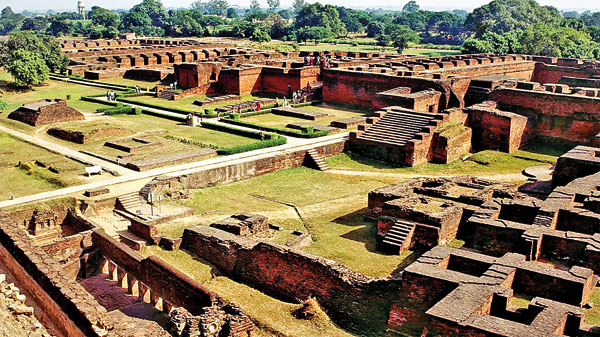Sunday Times 2
Nalanda: The university that changed the world
View(s):By Sugato Mukherjee
More than 500 years before Oxford University was founded, India’s Nalanda University was home to 9 million books and attracted 10,000 students from around the world.

The excavated Unesco site extends for 23 hectares, but is likely a mere fraction of the original campus (Credit: Dinodia Photos/Alamy)
In the more-than seven centuries that Nalanda flourished, there was nothing else like it in the world. The monastic university predates the University of Oxford and Europe’s oldest university, Bologna, by more than 500 years. What’s more, Nalanda’s enlightened approach to philosophy and religion would help shape the culture of Asia long after the university ceased to exist.
Interestingly, the monarchs of the Gupta Empire that founded the Buddhist monastic university were devout Hindus, but sympathetic and accepting towards Buddhism and the growing Buddhist intellectual fervour and philosophical writings of the time. The liberal cultural and religious traditions that evolved under their reign would form the core of Nalanda’s multidisciplinary academic curriculum, which blended intellectual Buddhism with a higher knowledge in different fields.
The ancient Indian medical system of Ayurveda, which is rooted in nature-based healing methods, was widely taught at Nalanda and then migrated to other parts of India via alumni. Other Buddhist institutions drew inspiration from the campus’ design of open courtyards enclosed by prayer halls and lecture rooms. And the stucco produced here influenced ecclesiastical art in Thailand, and metal art migrated from here to Tibet and the Malayan peninsula. But perhaps Nalanda’s most profound and lingering legacy is its achievements in mathematics and astronomy.
The university regularly sent some of its best scholars and professors to places like China, Korea, Japan, Indonesia and Sri Lanka to propagate Buddhist teachings and philosophy. This ancient cultural exchange programme helped spread and shape Buddhism across Asia.
Like today’s elite universities, admission was tough. Aspiring students needed to engage in a rigorous oral interview with Nalanda’s top professors. Those who got lucky were tutored by an eclectic group of professors from different corners of India.
The library’s handwritten, palm-leaf manuscripts was the richest repository of Buddhist wisdom in the world, and one of its three library buildings was described by Tibetan Buddhist scholar Taranatha as a nine-storey building “soaring into the clouds”.
(Excerpt from the full article on BBC)

